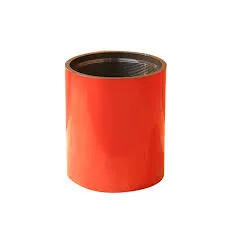- Afrikaans
- Albanian
- Amharic
- Arabic
- Armenian
- Azerbaijani
- Basque
- Belarusian
- Bengali
- Bosnian
- Bulgarian
- Catalan
- Cebuano
- Corsican
- Croatian
- Czech
- Danish
- Dutch
- English
- Esperanto
- Estonian
- Finnish
- French
- Frisian
- Galician
- Georgian
- German
- Greek
- Gujarati
- Haitian Creole
- hausa
- hawaiian
- Hebrew
- Hindi
- Miao
- Hungarian
- Icelandic
- igbo
- Indonesian
- irish
- Italian
- Japanese
- Javanese
- Kannada
- kazakh
- Khmer
- Rwandese
- Korean
- Kurdish
- Kyrgyz
- Lao
- Latin
- Latvian
- Lithuanian
- Luxembourgish
- Macedonian
- Malgashi
- Malay
- Malayalam
- Maltese
- Maori
- Marathi
- Mongolian
- Myanmar
- Nepali
- Norwegian
- Norwegian
- Occitan
- Pashto
- Persian
- Polish
- Portuguese
- Punjabi
- Romanian
- Russian
- Samoan
- Scottish Gaelic
- Serbian
- Sesotho
- Shona
- Sindhi
- Sinhala
- Slovak
- Slovenian
- Somali
- Spanish
- Sundanese
- Swahili
- Swedish
- Tagalog
- Tajik
- Tamil
- Tatar
- Telugu
- Thai
- Turkish
- Turkmen
- Ukrainian
- Urdu
- Uighur
- Uzbek
- Vietnamese
- Welsh
- Bantu
- Yiddish
- Yoruba
- Zulu
Understanding Vacuum Hose Connection Techniques for Optimal Performance and Reliability
Understanding Vacuum Hose Couplings An Essential Component in Various Applications
Vacuum hose couplings are critical components used across a variety of industries, from automotive to manufacturing, and even in the fields of plumbing and HVAC (Heating, Ventilation, and Air Conditioning). Understanding these couplings involves recognizing their purpose, types, applications, and maintenance tips to ensure optimal performance.
What is a Vacuum Hose Coupling?
A vacuum hose coupling refers to a type of connector that links two hoses in a vacuum system. Its primary purpose is to facilitate the secure joining of hoses to prevent the loss of suction or pressure. These couplings are designed to withstand variations in temperature, pressure, and other environmental factors to maintain an efficient and effective vacuum system.
Types of Vacuum Hose Couplings
There are several types of vacuum hose couplings, each suited for specific applications and requirements
1. Barbed Couplings These are the most common type of couplings, featuring a barbed end that grips the inner walls of the hose, providing a secure connection. Barbed couplings are inexpensive and easy to install, making them popular in various applications, from household use to automotive repairs.
2. Tri-Clamp Couplings Often used in sanitary applications, such as food and beverage processing or pharmaceutical manufacturing, tri-clamp couplings offer a smooth surface and are easy to clean. They consist of two ferrules and a clamp that holds the hoses together, ensuring a leak-proof seal.
3. Cam Lock Couplings These couplings are popular in industrial settings where quick connections and disconnections are required. With a simple cam lever mechanism, they facilitate fast assembly and disassembly, making them ideal for temporary setups or frequent maintenance.
4. Quick Disconnect Couplings Similar to cam locks, quick disconnect couplings allow for easy connection and disconnection. They are widely used in applications where hoses need to be swapped out regularly or where portability is a concern.
5. Threaded Couplings These couplings use a screw-thread mechanism to secure the hose connection. Although they take more time to connect and disconnect, they offer a very robust seal, making them suitable for high-pressure applications.
Applications of Vacuum Hose Couplings
Vacuum hose couplings find applications in numerous fields, including
vacuum hose coupling

- Automotive They help connect various components of a vehicle’s vacuum system, such as brake boosters and emissions control systems. - Industrial In manufacturing and production environments, these couplings are used in dust extraction systems, material handling, and conveying systems.
- HVAC Systems For heating and cooling systems, vacuum hose couplings facilitate air handling and filtration processes
.- Food Processing In the food and beverage industry, hygienic couplings play a vital role in ensuring safe and contamination-free operations.
Maintenance and Best Practices
To ensure the longevity and efficiency of vacuum hose couplings, regular maintenance is essential. Here are some best practices
1. Inspect Regularly Check for signs of wear and tear, such as cracks, discoloration, or leaks. Promptly replacing damaged couplings can prevent larger system failures.
2. Clean After Use Especially in sanitary applications, make sure the couplings are cleaned thoroughly to prevent contamination.
3. Use Proper Installation Techniques Ensure that couplings are installed according to the manufacturer's specifications, using the right tools and methods to avoid damaging the couplings or hoses.
4. Use Compatible Materials When selecting couplings, ensure they are compatible with the hose materials and the substances being transported to avoid chemical reactions or material degradation.
5. Monitor for Performance Keep an eye on the vacuum system's performance. If you notice a drop in suction or any unusual sounds, it may indicate a problem with a coupling or hose.
Conclusion
In conclusion, vacuum hose couplings are indispensable components that play a significant role in various applications across multiple industries. By understanding the different types available, their applications, and how to maintain them, users can ensure that their vacuum systems operate efficiently and effectively. Whether in automotive, industrial, or sanitary settings, the importance of reliable hose couplings cannot be overstated, making them a vital focus for both manufacturers and end-users alike.
-
Well Casing Extension Couplings – Applications and InstallationNewsJun.06,2025
-
Types of Crossover Subs in Drilling & CompletionNewsJun.06,2025
-
Key Features of High-Quality Tubing Pup JointsNewsJun.06,2025
-
Installation and Maintenance Tips for Steel Couplings for PipeNewsJun.06,2025
-
How to Select the Right Pup Joint for Oil & Gas OperationsNewsJun.06,2025
-
Applications of Stainless Steel Pipe CouplingsNewsJun.06,2025







